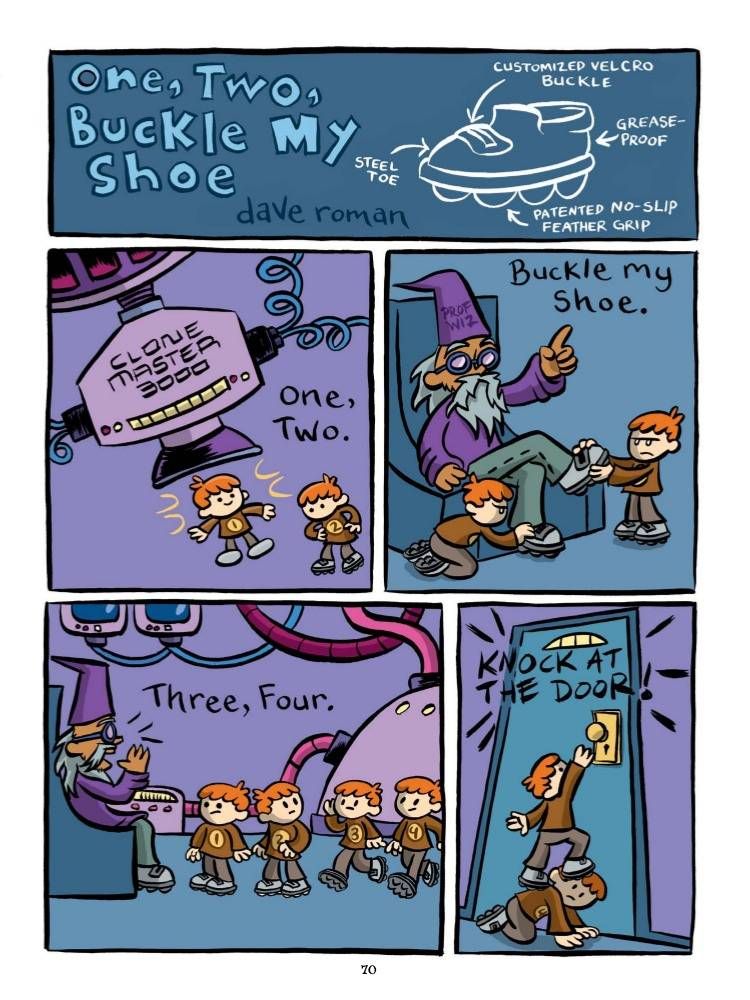All this week at Robot 6 we’re interviewing some of the many contributors to First Second’s new anthology, Nursery Rhyme Comics. Today Brigid Alverson talks to the editor, Chris Duffy.
Chris Duffy is the former editor of Nickelodeon Magazine's comics section and the current editor of SpongeBob Comics. I was interested in hearing the inside story of Nursery Rhyme Comics—how he rounded up this diverse array of talent and what sort of marching orders he gave them—and Chris obliged with some interesting insights into the making of Nursery Rhyme Comics.
Brigid Alverson: You have some really big names contributing to this book. Were you the one who recruited them, and if so, how did you get them to participate?
Chris Duffy: Almost everyone we asked wanted to be a part of the book. That's the good news with a collection with a great, clear concept like this book has. Everyone wants in! The challenge was paring down our list to 50 cartoonists (harder than you might think) and just making all those phone calls and emails. I did most of the contacting, though Mark Siegel and Calista Brill broke the ice with a lot of creators who they knew well. I should mention that the idea began with former First Second publisher Lauren Wohl.
Alverson: As an editor, did you match up creators with rhymes, or did you let them choose their own?
Duffy: As an editor, it's nice to stay sane and pretend you're in control. So it went like this: first I read a LOT of nursery rhymes. (Hint: the Oxford Dictionary of Nursery Rhymes is the place to start.) I chose 50 that were a good mix of types as well as lengths and degrees of fame. Then I started at the top of the cartoonist list and tried to match that name with a rhyme--based on their work. Chose a few backup rhymes, then approached the cartoonist. Some kept asking to see more rhymes, some got right into the one we sent, and one went and found her own darn rhyme, thank you very much!
Alverson: What sort of guidelines did you give the creators?
Duffy: The goal was to make it a real nursery rhyme book, not a parody or a deconstruction. So, the first rule was that the words of the rhyme were presented in a clear way. Readers had to see quickly what words went with the rhyme and which were the little asides. (If there were asides.) Nursery rhyme books are meant to be read out loud and that needed to be possible with Nursery Rhyme Comics. Beyond that, not many guidelines, though we urged the cartoonists to have fun with it and to keep young readers in mind.
Alverson: Nursery rhymes are already familiar to the readers, and there are a million nursery rhyme books out there already. How did you approach the problem of doing something original with them?
Duffy: Now there are a million and one! Cartoonists, in my experience, have no trouble coming up with their own way to tell an old story. They seem to live for it. How many cartoonists, on their own, draw their own Charles Atlas comic or Jack Chick parody or send-up of superhero origins? Lots! I knew from the start that with the people we were approaching we'd get quite a few original takes. The results surpassed my expectations and then some.
Alverson: Which comic surprised you the most, in terms of the creator's interpretation of the original material?
Duffy: Even though I know him very well from our time together at Nickelodeon Magazine, Dave Roman created a comic that surprised me and surprises everyone who reads the book. One doesn't immediately associate "One, Two, Buckle My Shoe" with clones, mad scientists, and mutant chickens sliding on melted butter. There were many other surprises, such as the gigantic guard at the end of David Macaulay's "London Bridge" and the flying cats in Theo Ellsworth's "As I Was Going to St. Ives."
Alverson: Who do you see as the readers of this book? Children, nostalgic adults, or adults reading aloud to children?
Duffy: Yes, yes, and yes.


